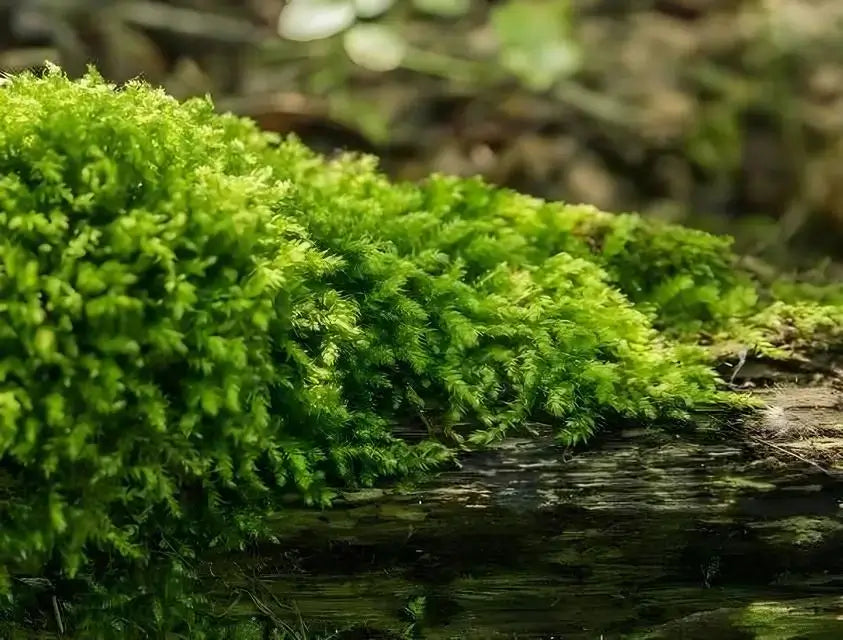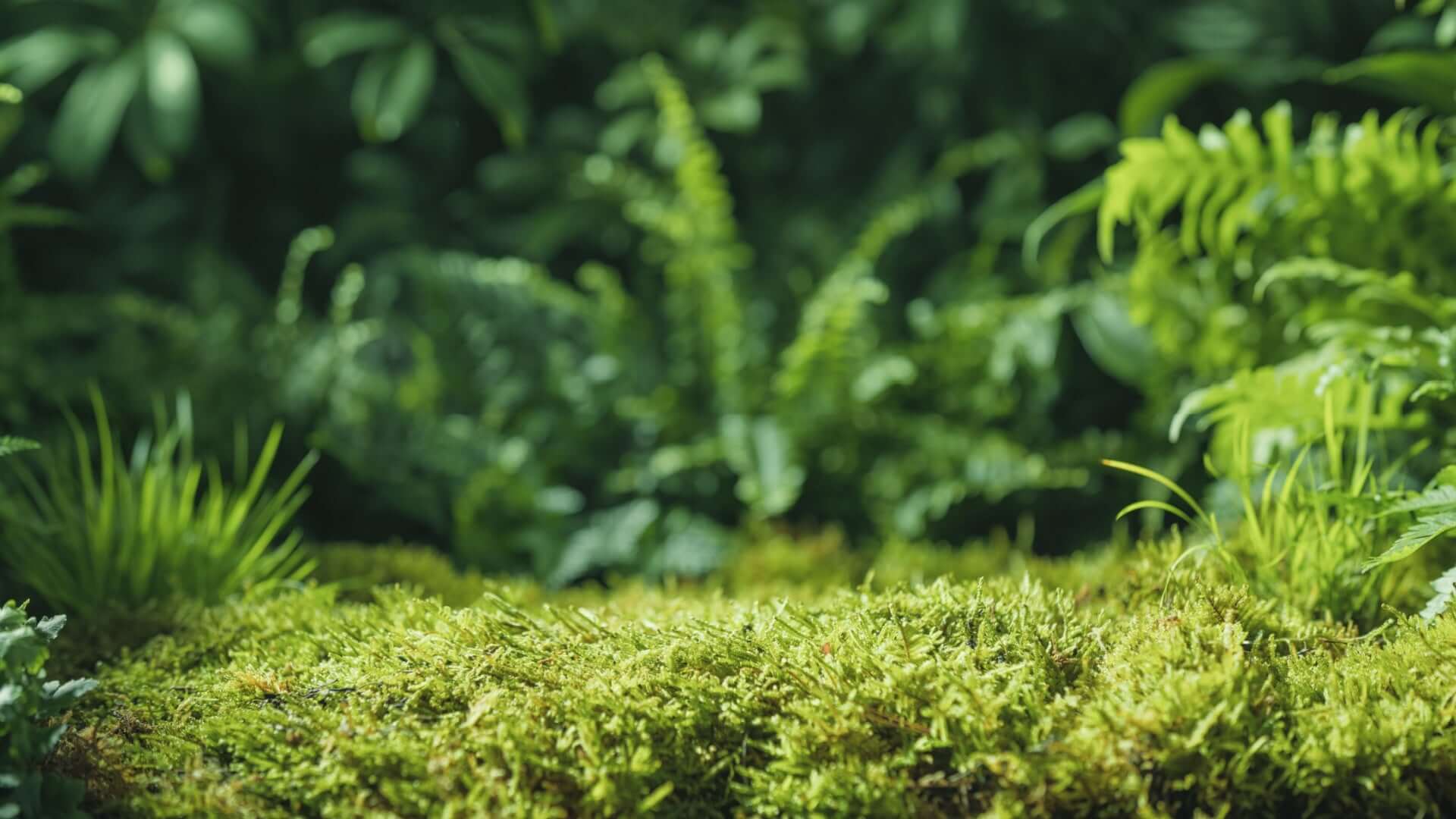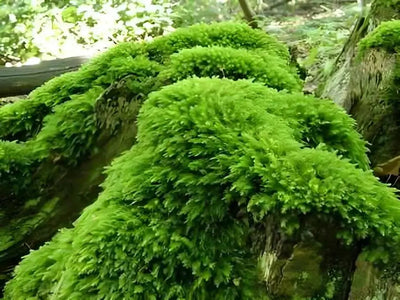Fern moss (Thuidium delicatulum) is a soft, carpet-like plant that adds an enchanting, earthy charm to gardens. Its delicate, feathery fronds resemble the leaves of ferns, giving it its common name. Growing fern moss in your garden offers a unique aesthetic, evoking the feel of ancient forests and untouched wilderness. Mosses like these thrive in shady, damp areas and can transform a simple garden bed into a lush, green sanctuary. As a low-maintenance plant, fern moss is ideal for those looking to enhance the natural beauty of their outdoor spaces without constant care.
How fast does Fern Moss spread?
Fern moss spreads slowly to moderately depending on environmental elements such as rays, moisture, and dirt. While it does not grow as quickly as some other ground covers, fern moss can form an even, dense mat over time, creating a beautiful, continuous layer of green. The spreading process is typically gradual, but it will establish itself steadily with the right conditions-such as shaded areas and consistently moist soil. Its creeping growth pattern allows it to cover bare patches of soil or rocky areas, making it an ideal option for filling holes in garden landscapes. Fern moss's ability to propagate through tiny spores and its spreading shoots helps it gradually colonize new areas. The moss spreads horizontally rather than growing vertically, staying low to the ground and creating that soft, cushiony texture.
What is Fern Moss used for?
Fern moss is versatile in garden design and serves aesthetic and practical purposes. Many gardeners use it to create serene, woodland-style landscapes or to soften the edges of rock gardens, pathways, and shaded areas where other plants might struggle. Its velvety green texture makes it a popular choice for adding depth and contrast to gardens that aim for a natural, rustic appearance. The plant is also widely appreciated for its erosion control properties. Its dense mats help stabilize soil on slopes and areas prone to erosion by retaining moisture and preventing runoff. It is often used between stepping stones or along walkways, where its resilient nature ensures it can withstand light foot traffic while maintaining its lush, vibrant look.
In addition to its ornamental value, fern moss provides ecological benefits. Mosses are generally excellent at retaining dampness in the dirt, decreasing the need for frequent watering in gardens. They also serve as natural filters, soaking pollutants and helping preserve clean air in the garden environment. Many gardeners are drawn to how fern moss enhances biodiversity, providing shelter for small insects and animals and contributing to a balanced ecosystem.
What time of year should Fern Moss be planted?
Fern moss thrives when planted in the cooler, damper seasons of the year. Spring and early fall are ideal for introducing fern moss into your garden because they provide the moisture and mild temperatures the plant needs to establish itself. Evade planting during the height of summer, when the heat and dry conditions could stress the moss and hinder its growth. During these favorable planting periods, fern moss will have time to settle into its environment before any potential winter frost arrives. Fern moss will quickly establish itself in shaded or semi-shaded areas if the soil is moist.

If you want to cover a large area with fern moss, it's best to ensure the space is prepped with well-draining, loamy soil. The moss can handle some variation in soil types, but it's most successful when planted in slightly acidic to neutral pH soils. After planting, maintaining consistent moisture is crucial to help the moss spread and develop its characteristic thick carpet.
What is Fern Moss's life cycle?
The life cycle of fern moss is fascinating and quite different from most plants in the garden. Like all mosses, fern moss reproduces through spores, not seeds, and goes through an alternating cycle between two phases: the gametophyte phase, which is the leafy green part that you see, and the sporophyte phase, where it produces spores for reproduction. In its gametophyte stage, fern moss develops tiny, delicate leaves that capture moisture and light for photosynthesis. This stage can last several years, during which the moss spreads and grows in its chosen environment.
When conditions are favorable-typically in a damp, humid setting-the fern moss begins the sporophyte phase. During this phase, the plant sends up tiny, stalk-like structures topped with capsules that contain spores. Once mature, these capsules release the spores into the air, which can travel to new locations to start the cycle again. These spores germinate in moist conditions, giving rise to new patches of moss.
Fern moss has a long lifespan and can persist and thrive for many years as long as it's in the right environment. Even in unfavorable conditions, moss can enter a dormant state and bounce back when moisture returns, making it one of the most complex plants you can have in your garden. Its ability to withstand drought and extreme cold further highlights its resilience, though it's at its best when nurtured in a cool, shady, and moist habitat.
In summary, fern moss is a delightful addition to any garden, offering beauty and function. Its slow spread ensures it never becomes overwhelming, while its various uses-from aesthetic enhancement to soil stabilization-make it a valuable component of a well-rounded garden. Whether you're looking to evoke the feel of a deep forest or add a low-maintenance plant to your landscape, fern moss offers a unique, captivating option for your outdoor space.


